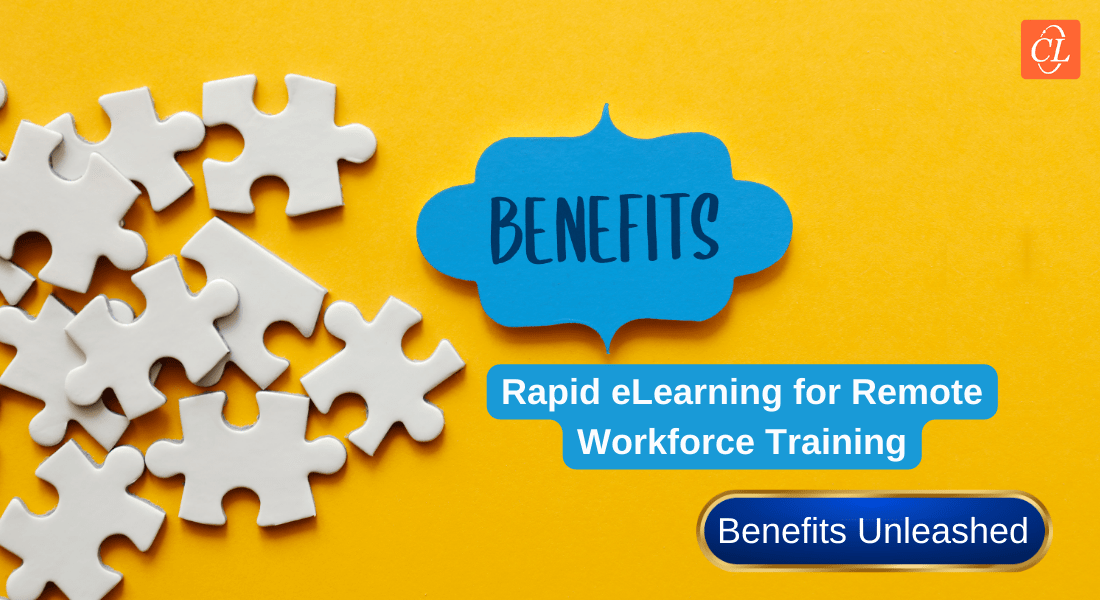Top 4 Innovative Trends That Will Reform the Future of eLearning

Due to the recent pandemic, the corporate world has gone through various shifts and the way everything used to work, has changed drastically. Probably, things are never going back to how they were, and companies have started to accept the changes and advancements that follow. One of the most prominent changes has been the methods through which a company trains its employees. The eLearning industry has adopted a more modern and personalized approach toward learning. With no signs of stopping further, the right combination of eLearning techniques and modern technologies will cross the current boundaries of innovation in the coming years and shape the future of eLearning.
Can you Guess the Trending Innovations That Shall Reform the Future of eLearning?
Here are the top 4 innovations that can shape the future of eLearning:
- Personalized Learning Through Learning Analytics
- Artificial Intelligence and Machine Learning
- Augmented Reality and Virtual Reality
- Mobile Learning and Microlearning
Scroll down to read about each of these innovative trends in detail.
4 Innovative Trends That Will Shape the Future of eLearning
1. Personalized Learning Through Learning Analytics
eLearning has become more fast-paced than ever, but that doesn’t mean everyone will understand what is thrown at them. People learn different things differently, and to generate the maximum ROI, companies need to ensure their eLearning courses are consumed efficiently. But how? Here’s how learning analytics come into play. Learning analytics help you ensure that your courses have achieved the desired results and outcomes or not. As the name suggests, the learner data is collected, analyzed, and reported to the learners and the company, measuring the performance of employees in detail.
A detailed learning analytics report consists:
- Track of learner’s progress
- Areas of improvement
- Personalized feedback
- Learner performance prediction
Learning analytics help the companies understand their employees deeply, make necessary changes to their learning modules and courses, and understand their investment returns.
→ Access our free webinar recording to get started with learning analytics.
2. Artificial Intelligence and Machine Learning
Artificial intelligence is still a puzzle to solve for a lot of companies out there. Directly implementing AI anywhere is never going to produce results, rather promotes a lazy working environment, that affects the productivity of a company. To implement AI into your eLearning program, you first need to figure out what are the tasks that can be automated and handled by AI. Even though AI is a bit tricky to use, getting a hold of this technology saves a lot of time for the companies. When I say AI, machine learning sticks around as well. The prime motive of machine learning is to make the system learn things on its own without human intervention.
Machine learning is a sub-part of artificial intelligence and when combined effectively together, eases out a lot of distinct processes for companies to incredible extents. Learning analytics plays a vital role in the implementation of machine learning within eLearning programs. A full-fletched chatbot is a perfect example of AI and ML technologies embedded together along with the data gathered through learning analytics.
3. Augmented Reality and Virtual Reality
Augmented reality is basically a type of technology that has enabled the creation of interactive online experiences in a real-time environment. Objects that exist in the real world are enhanced by computers and recreated virtually to provide an interactive experience without the actual presence of that object. Virtual reality is just an advanced version of AR that is more immersive. A 360-degree image and advanced video capture technology are used in VR to create an immensely engaging virtual 3D environment. AR and VR help to engage learners creatively and retain the information they gain, because of the first-hand experience AR and VR provide.
Applications of AR and VR can be specific and dynamic as per the requirements but some of their prime applications are medical training and mechanical training. As much as smartphones have boomed over these few years, a new technological advancement called smart glasses has started growing because of their untapped potential while VR headsets like Oculus Rift and Oculus Quest are already spreading in the market like wildfire. AR smart glasses will allow virtual knowledge to be implied in a real-time environment. With smartphones being the basic necessity nowadays, technologies such as AR and VR can be integrated within them effectively which will insanely reform the methods of eLearning.
4. Mobile Learning and Microlearning
Mobile learning and microlearning are probably the simplest and the most effective innovations in the eLearning industries. Every form of content, every information, every possible course, basically everything is available on our smartphones, that too in the form of small bite-sized chunks instead of long monotonous content. Even though mobile learning and microlearning are already a form of technology that is deeply integrated within eLearning, the potential it holds is yet to be achieved.
Mobile learning holds the most untapped potential because of the fact that other future technologies will depend on their integration into mobile devices in some way or another. Every possible technology like AR, VR, or the metaverse partially depends on the modifications in smartphones and other smart mobile devices to expand their respective horizons while microlearning will always be a subpart of mobile learning making them both a powerful duo in the field of eLearning.
It’s a Wrap!
eLearning has incorporated various technologies and companies tend to successfully implement them all to boost employee engagement and improve ROI. The flexibility to learn anywhere and not depend on physical presence to get trained is a shapeshifter strategy on its own, this one preference has introduced various versatile technologies while a lot more are still under development.
The introduction of technologies embedded within a proper medium and a successful strategy creates trends. Wondering what are the current eLearning trends? This free webinar recording might give you valuable insights.
Editor’s note: This post was originally published in August 2022 and has been updated for comprehensiveness.







